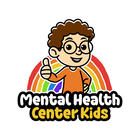The brain is a powerful organ that guides everything we do — from brushing our teeth to making decisions. One of its key areas is the frontal lobe, which helps with motivation, planning, social behavior, and language.
In a recent educational article in Frontiers for Young Minds, the authors break down the 5 key regions of the frontal lobe: the prefrontal cortex, frontal eye field, premotor cortex/supplementary motor cortex, primary motor cortex, and Broca’s area.
Knowing how each region of the frontal lobe functions goes beyond brain science — it has real-world applications in parenting and supporting kids emotionally.
Understanding the Frontal Lobe
The prefrontal cortex is in charge of planning, thinking ahead, and regulating emotions. The frontal eye field helps us focus and control our eye movements. The premotor and supplementary motor areas organize our body movements, while the primary motor cortex controls voluntary movements like lifting your arm or kicking a ball. Broca’s area is responsible for speech production and language.
When kids find it hard to manage emotions, stay on task, or express themselves, it’s because their frontal lobes are still maturing.
This part of the brain is also closely tied to mental health. Difficulties with emotional regulation, social interactions, and decision-making can be seen in children experiencing anxiety, ADHD, depression, or trauma.
This is why understanding the frontal lobe can help adults see children’s behaviors not just as “acting out” — but as signs of deeper needs.
Practical Tips for Parents and Caregivers
Now that we’ve covered the basics of the frontal lobe, let’s examine how this knowledge can help adults support children’s mental and emotional health.
Be patient with your child’s big feelings
Children aren’t born with the skills to manage frustration, sadness, or excitement — they learn over time. Instead of reacting to tantrums or outbursts, be curious. It helps to ask yourself: What is my child trying to communicate right now? or What emotion might be driving this behavior?
Use play and movement to support their brain
The frontal lobe is strengthened through physical activity. Give your child opportunities to run, dance, build, and create. For example, obstacle courses let kids plan their movements and think ahead. Dancing to music helps with rhythm and body coordination.
Movement also plays a powerful role in improving mood — physical activity releases feel-good brain chemicals that can help reduce stress.
Build their language abilities through daily conversation
Broca’s area supports spoken language and gets stronger when kids engage in real, back-and-forth conversations. Share stories, ask open-ended questions, or simply chat about their day. These are also opportunities to practice naming and expressing their feelings.
The authors are encouraging us to take what we’ve learned about the 5 regions of the frontal lobe and apply it to everyday life. It definitely helps parents notice which skills their child is still working on and how they can better support them along the way.
Help your child thrive. Check out our full collection of mental health worksheets for emotional wellness and personal growth.





















































